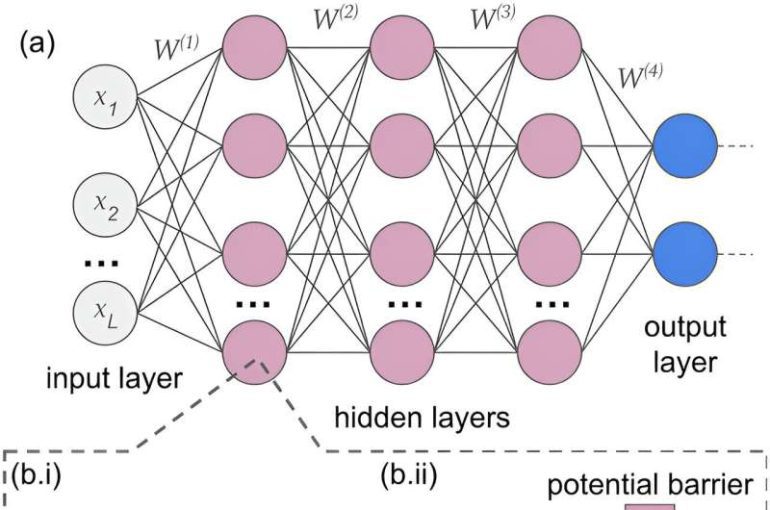- Quantum tunneling is applied to neural networks, improving their ability to simulate human perception, especially in optical illusions.
- The quantum-tunneling network outperforms traditional AI models in interpreting complex visual stimuli like the Necker cube and Rubin’s vase.
- Quantum mechanics could address the challenges of replicating human cognition in AI.
- The network shows advanced cognitive behavior by oscillating between multiple interpretations, mimicking human thought processes.
- This research opens new possibilities for understanding social behavior and enhancing AI’s ability to handle complex, ambiguous data.
Main AI News:
In the latest intersection of quantum mechanics, optical illusions, and neural networks, new research in APL Machine Learning introduces a neural network that uses “quantum tunneling” to simulate human perception. This novel approach allows the network to outperform traditional models in interpreting optical illusions like the Necker cube and Rubin’s vase, sparking intriguing questions about AI’s potential to mimic human cognition.
Optical illusions, which reveal the complexities of human vision, pose significant challenges for AI. While conventional neural networks struggle to decipher these illusions, this quantum-enhanced model leverages the phenomenon of quantum tunneling. In human cognition, the brain filters and prioritizes information, with neurons activating based on signals from their neighbors. Quantum tunneling allows neurons in this new network to bypass traditional barriers, activating even in scenarios they usually wouldn’t. This quantum twist could lead to more accurate models of human cognition in AI.
The implications of quantum tunneling extend beyond improving AI’s perception of illusions. Historically, quantum tunneling has transformed our understanding of natural phenomena, and now, it may offer solutions to the persistent challenge of modeling human cognition. Whether or not quantum effects directly influence brain function, their application in AI promises more efficient and sophisticated algorithms.
In practical terms, when faced with optical illusions, the quantum-tunneling network doesn’t merely switch between interpretations. Instead, it exhibits a behavior reminiscent of Schrödinger’s cat, oscillating between possible outcomes and even generating ambiguous results—mirroring the human brain’s processing of such illusions. It represents a significant advancement over traditional neural networks, potentially offering new insights into AI and human thought processes.
As we navigate an era rife with deep fakes and misinformation, understanding how our brains—and, by extension, AI—process illusions is more critical than ever. This research enhances our grasp of visual perception and hints at broader applications, such as understanding social behaviors and the dynamics within networks. While the ultimate goal of creating conscious AI remains on the horizon, this work marks a significant step toward a deeper understanding of artificial and human intelligence.
Conclusion:
Applying quantum tunneling in neural networks represents a significant leap in AI’s ability to mimic human cognition and perception. This breakthrough can potentially revolutionize sectors that rely on advanced AI, such as autonomous systems, healthcare, and digital media, by enabling more accurate and nuanced data interpretation. As these quantum-enhanced AI models mature, they could drive innovation and competitiveness in industries that require sophisticated decision-making tools, offering new solutions for complex challenges like misinformation and dynamic social interactions. It marks the beginning of a new era in AI development, with substantial implications for market growth and technological advancement.

